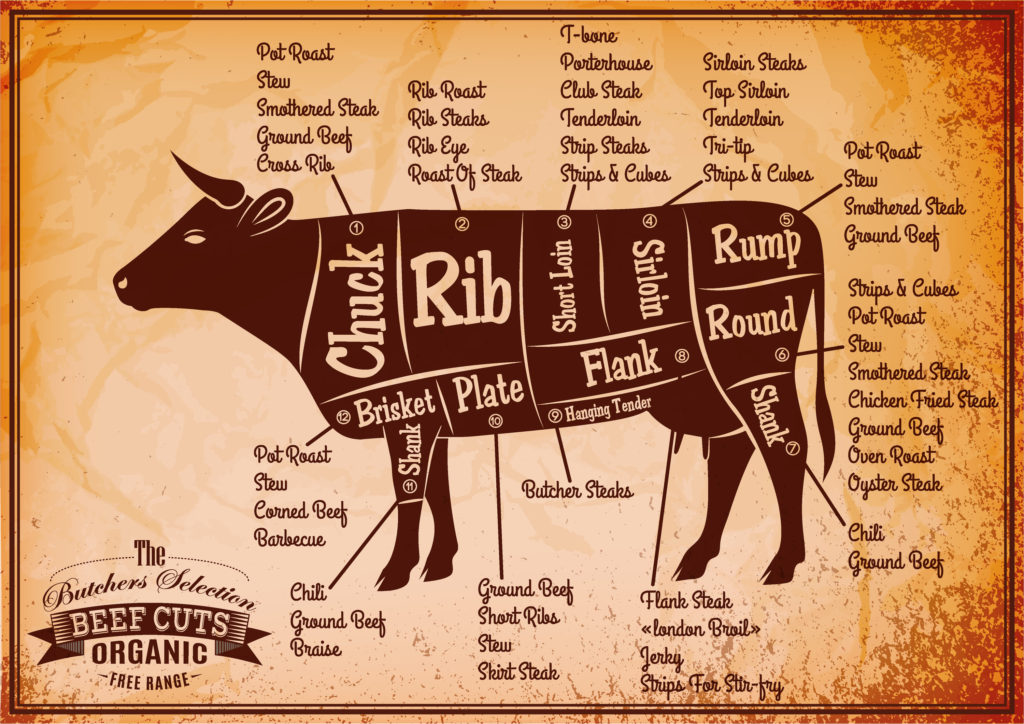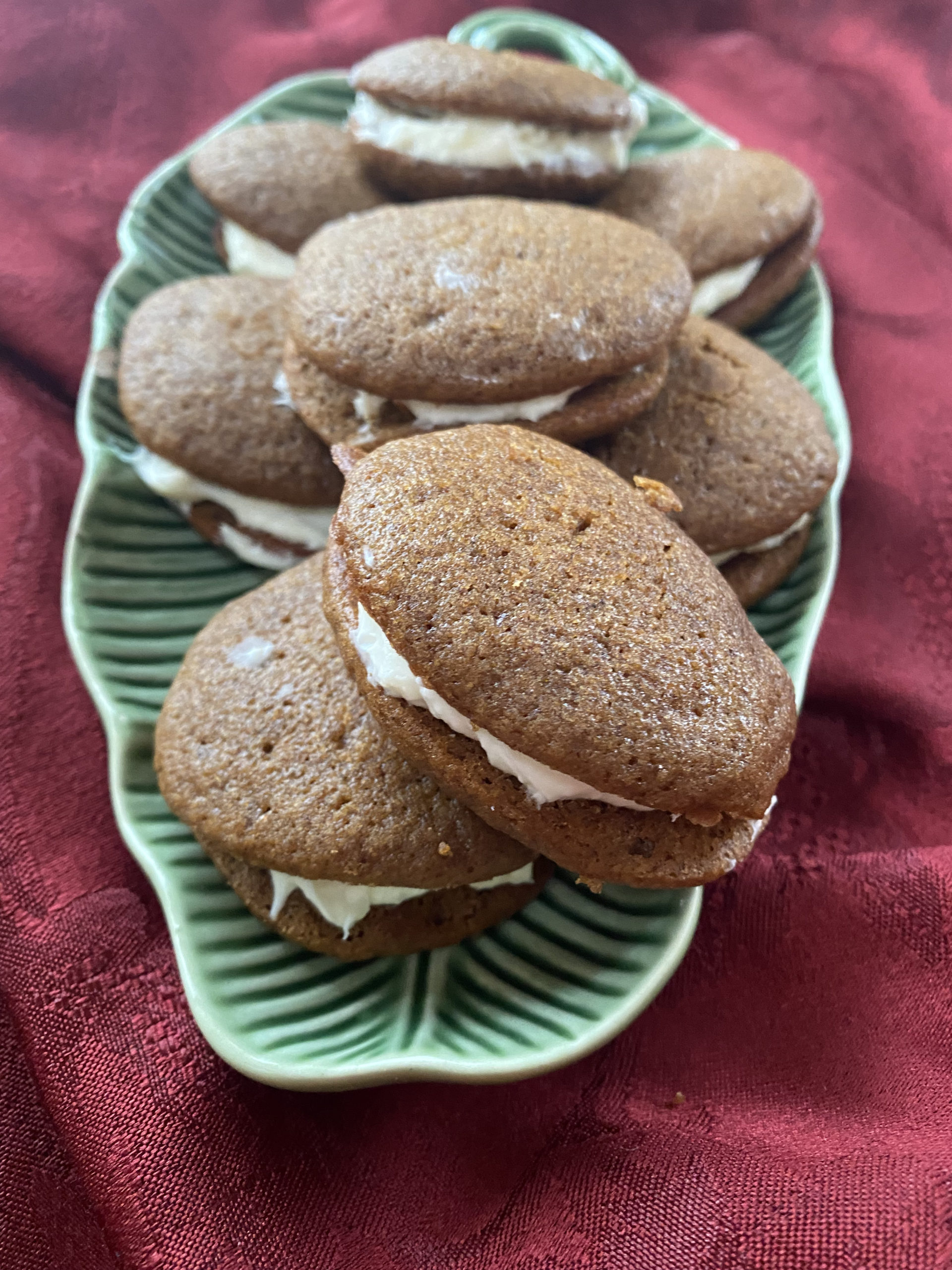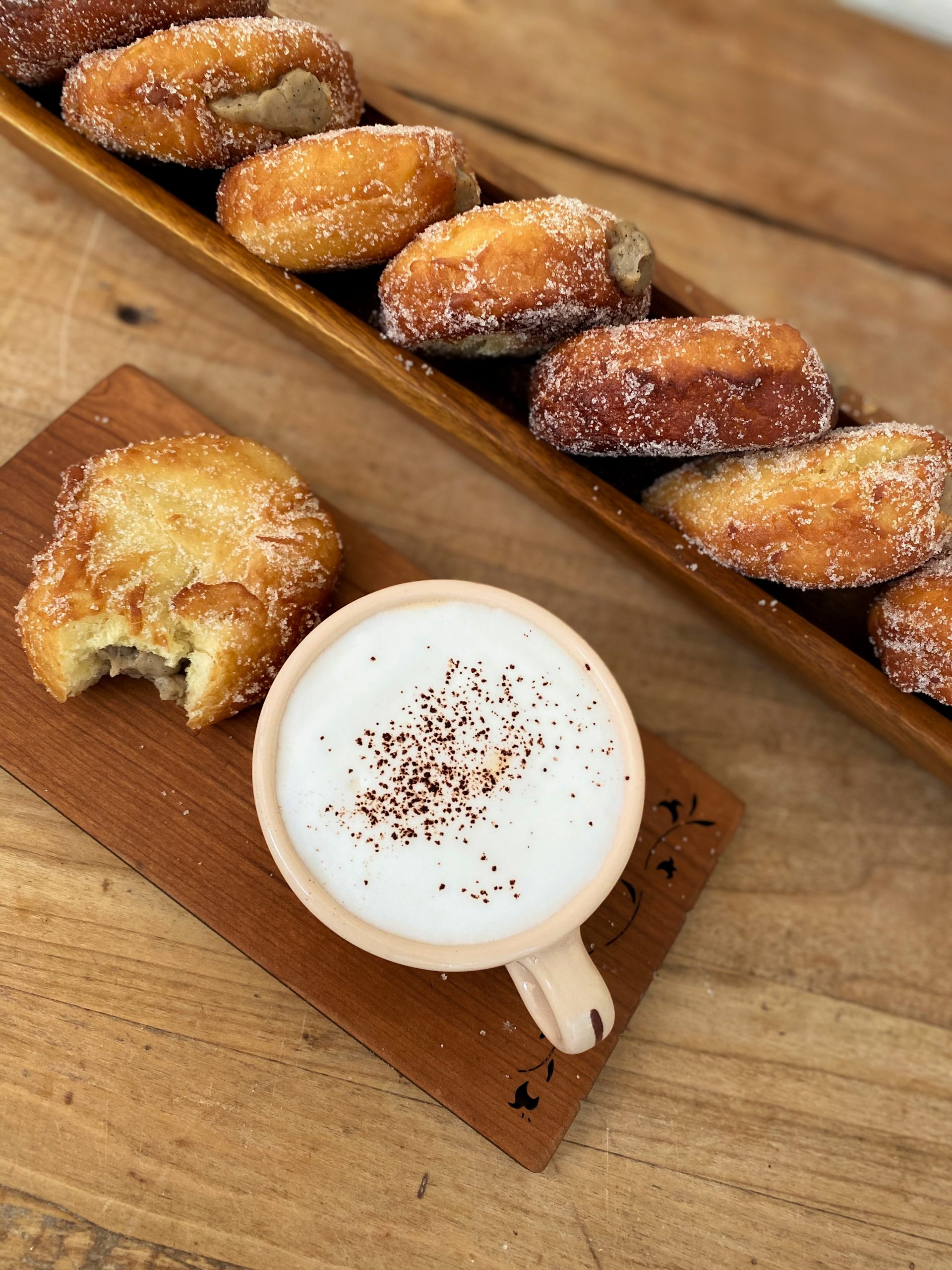
Are you well schooled in the different cuts of meat, what they’re used for, and what their substitutes are, but still confused as to what to buy? We’re hoping this post will help you better navigate the meat aisle.
Most of my meal planning occurs in my own home. I pull out my recipe book, peruse my favorite cookbooks, and page through recent clippings from magazines and newspapers in a search for new recipes our family can enjoy.
As I head to the grocery, I’m armed with my shopping list and am dedicated to sticking to the list. Very few things will rattle my cage, but once in a while, I’m thrown for a loop. And that usually happens when I’m at the meat counter.
My shopping list, compiled from recipes chosen for the week, includes specific cuts of meat. On occasion, that cut isn’t available — or is priced way above my budget and I’m left to wonder, what can I buy as a substitute.
I generally ask the butcher, and he proves to be very helpful in finding alternatives. But that’s because where I shop, the person behind the counter is actually knowledgeable about the cuts of meat. This kind of service isn’t always available at the supermarket. If you’re lucky enough to find someone in the meat department who doesn’t avert their eyes from you, they usually aren’t armed with the knowledge to provide that level of service.
Here are a few tips and tricks provided from Bi-Rite Market in San Francisco that will help you create your shopping list. Once you make your way to the meat counter, don’t be intimidated, asking questions will be the surefire way that you’ll get what you want.
Roasts
Roasts are medium-to-large sized pieces of meat, and thus take a little more time to cook. But the cooking also tends to be pretty hands-off, and they’re an easy way to feed a lot of mouths at once.
Cuts to Use for Roasting
Prime Rib – The same muscle as the ribeye, but kept whole with bones in a multi-piece rib.
Tenderloin – The most tender muscle from a steer, with a fine velvety grain.
Chuck Roast, Top Sirloin Roast, Tri-Tip – Delicious cooked whole and then sliced.
Roasting How-to:
Sear-Roast
Starting on the stovetop gives the meat a better crust and kick-starts the cooking process. It works best for smaller roasts – very large or awkwardly shaped roasts can be difficult to brown in a skillet.
To do it:
1. Heat your oven to 350 degrees F. Season meat well. Heat 1- tbsp. oil or fat in an oven-proof skillet over medium-high heat. When the oil is shimmering hot, add the meat and let cook undisturbed for at least 2 minutes. Then check the progress of the browning – if it sticks, it probably needs more time. When golden brown, turn and repeat until all sides are browned.
2. Then transfer the skillet to the oven and roast, checking the temperature every 5-10 minutes, until the meat reaches the desired doneness.
Traditional Roasting (the ultimate in hands-off cooking)
To do it:
1. Heat your oven to 350 degrees F. Season meat well and place in a roasting pan or on a rimmed baking sheet. Bake until desired doneness (timing will vary considerably depending on the size of the roast).
2. You can also start the roast in a 425 degree F oven to encourage browning (20-30 minutes), and then reduce to 275-350 degrees F for the remainder of the cooking time. (Lower oven temperature means longer cooking times, but the payoff is more even cooking and more tender and succulent roasts.)
Stews and Braises
Stewing and braising are magical techniques, as they turn tough and less expensive cuts of meat into tender, succulent ones. The secret is plenty of time, a low cooking temperature, and a flavorful poaching liquid. Stewing and braising are essentially the same technique – with stewing, more liquid is used.
Cuts to use for Stews and Braises
Stew meat, Short Ribs and Brisket.
How to Cook:
1. Heat 1-2 tbsp of oil in a Dutch oven over medium-high heat. Season meat and add in a single layer (work in batches, if necessary) and cook, turning, until browned all over (2-4 minutes per side).
2. Remove the meat, pour off and discard excess fat, and add large-diced celery, carrots, and onions. Saute until the vegetables begin to take on some color. Then add a splash of wine, broth, stock, or beer and use a spoon to dislodge any brown bits from the bottom of the pan. Then add the meat, a few herbs, and enough stock, broth, or water to come about halfway up the mat. (For a stew, add enough liquid to just cover the meat).
3. Bring the liquid to a simmer, cover, and either continue to simmer very gently, or transfer to a preheated 275-325 degree F oven. The lower temperature results in a more tender, flavorful stew. Cook until the meat is very tender when pierced with a fork – anywhere from 2-4 hours.
4. When meat is done, you may wish to remove it from the pan and reduce the braising liquid stovetop to make a sauce. If you’ve used broth as your cooking liquid, be careful not to over-reduce or it may become too salty.
Steaks
Steak can mean a large piece of meat cut into individual portions prior to cooking, or a smaller muscle that is usually cooked whole and sliced for serving. In both instances, steaks are quick-cooking and are perfect for weeknight meals.
Cuts of Steaks
Flank, Bavette, Skirt – Most tender when cooked no further than medium-rare
Ribeye, T-bone, Porterhouse, New York – For when you’re in the mood for a classic steak. Succulent with a great chew.
Tenderloin – The most tender muscle from a steer, with a fine velvety grain.
Top Sirloin, Tri-tip – Full of flavor, and best when cooked medium-rare or medium.
How to Cook Steaks
Stovetop:
This method works well for thin cuts of met or ones that you want to keep on the rare side.
To do it:
1. Season meat well. Heat 1-2 tbsp. oil or ft in a skillet over medium-high heat. Add the meat and let cook undisturbed for at least 2 minutes. Then check the progress of the browning – if it sticks, it probably needs more time. When golden brown, flip and cook until it reaches the desired doneness. If the meat is browning too quickly, reduce the heat and/or finish cooking in a preheated 350 degree F oven.
Broil
Broiling gives you a little color on the surface without having to tend a skillet. In broiling, the heat source is source is situated over (and fairly close to) whatever is being cooked.
To do it:
1. If your broiler element is in the top of the oven, position a rack 4-6 inches from the element. Rub the meat with a little oil and season well, place on a baking sheet and put the pan under the broiler. When the first side is nicely colored, flip the steak and cook the other side. Be sure to keep an eye on it to avoid overcooking or burning.
Grill
Grilling gives beef a great charred, smoky flavor
To do it:
1. Prepare a charcoal grill or heat a has grill to medium-high. When hot, clean the grate with a wire brush and wipe down with an oil-dipped paper towel. Season the steaks and then grill 2-8 minutes per side, depending on the thickness of the steaks and how well you like them done.
General Tips for Cooking Beef
- Let large cuts come to room temperature before cooking
- For best browning, pat meat dry and avoid over-crowding the pan
- Season meat well with salt and pepper just prior to cooking. Marinades and dry rubs are a great way to add flavor.
- Lubricate your cooking surface. Use a neutral oil, such as canola, vegetable, grape seed, or pure olive oil. Duck fat and lard also work well.
- An instant-read thermometer is your best friends when it comes to cooking meat. Insert it into the thickest part of the meat for the most accurate reading.
- Roasts or other cuts to be served sliced should rest, loosely tented in foil, for 10-15 minutes prior to slicing; this helps the meat stay juicy.
Save
Save
Save





